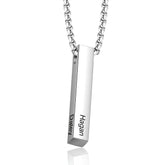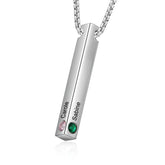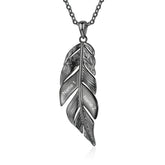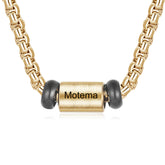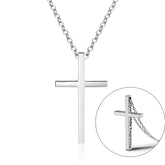What is a Carat: An In-depth Exploration
Understanding Carat: Basics, History, and its Significance
The term "carat" is of supreme significance in the gemstone world, particularly for diamonds. However, to gain an understanding of its importance, one needs to traverse back into history and see what importance it held and how it has changed since then.
The carat is the standard unit of weight for a diamond and most colored gemstones. It has its history planted from the carob seed, which is historically consistent in weight. Thus, it became an ancient benchmark for gemstone weight measurements 1 carat equals 200 milligrams.
The term "carat", as it were, seems to fly everywhere nowadays most especially with the people who are starting to tinker in this realm of jewelry. Yet, its origins were rooted deep into the annals of trading. The etymology can be traced back to the word 'keration', an ancient Greek term referencing carob seeds, once a popular and remarkably uniform counterbalance in weight measurements for traders.
The Odyssey of Carat through Time
History takes us back to the time when Mediterranean traders, in search of a consistent metric, turned their gaze towards nature. Enter the seeds of carob tree which are uniform in weight and emerged an impeccable choice. As traders searched across expanse of lands and travelled far and wide to reach exotic cultures, this practice found a universal appeal that forms the basis for today's carat measurement.
Modern Implications of Carat in Gemology
Although carat indicates the weight of a diamond, it is the actual weight in terms of carats that plays its pivotal role in determining its value in today's parlance. A diamond's size, being denoted by its carat is inversely proportional to its rarity and thus its cost. However, size does not only dictate its allure. Other factors including clarity, color and cut interplay to decide its worth and aesthetic appeal.
In fact, apart from just knowing what a carat is, when one ventures out to procure diamonds that's only the tip of the ice berg. Apart from the craftsmanship—the cut, and the purity—the clarity, the hue—the color, would also have to be taken into account in order to really understand, and assess a diamond's value.
Carat vs. Karat: Dissecting the Differences and Importance of Each Term
The term "carat" tends to make many people perplexed because of its initial sound that is easy to confuse with the term "karat". In the world of gemology and metallurgy, however, they have no similar meanings. Dive into the often mismatched terms and learn what unique weight has each term to offer in their respective worlds.
The terms "carat" and "karat" were originally derived from the same etymological source but, in time, they have both evolved to signify qualities relating to gemstones and not metals.
Unraveling the Mysteries behind Carat
Whereas a carat primarily is a measurement unit for both gemstones and pearls, weighing an equivalent of 200 milligram each. The inseparable significance observed in the diamond industry towards carat is represented in its ability to form a basis on measure size indicators for any given diamond. But again, this is where caution should be done because while carat indicates size, it is only one of the many factors that determine the value and desirability of a precious stone.
The Golden Meaning of Karat
On the other hand, karat is a term for a unit of measure which signifies the level of purity of gold. For instance, pure gold is considered to be 24 karats; however, in its pure form, gold is ductile and can be damaged easily. For this reason, gold is usually alloyed with other metals to add strength. The karat value is denoted to identify the amount of pure gold that exists in an alloy. For example, 18 karat gold is mainly composed of 18 parts of pure gold with six parts for other metals.
Questions Are Asked Often
Why essential to know the difference between carat and karat?
It is very essential to know a difference between carat and karat since it will guide one towards making an informed decision. When making a gemstone purchase, the same is expressed in carat to measure it with the size and hence indirectly expose the value. On the other hand, during purchases of gold, the karat helps determine the purity, quality, and durability of the metallic.
Can the terms carat and karat be used interchangeably?
No, they cannot be. The two terms speak of completely different measures that are used in the fields of gemology and metallurgy. They may sound alike, but it would be a misuse of language to interject one term for the other and lead people to confusion.
As a result, although "carat" and "karat" might seem to sound phonetically similar, their implications, effects produced, and areas of use are highly dissimilar. Acknowledging and being aware of this difference is essential for connoisseurs and experts who work with jewelry and metallurgy.
The Four Cs of Diamonds: A Deep Look at how the Carat Weight Interacts with Cut, Color, and Clarity

Neither the beauty nor a value of diamond is solely identified in relation to size nor carat weight. It is an intermingling of what is called 'Four Cs': Carat, Cut, Color and Clarity. Each 'C' has its individual role in determining the beauty and worthiness of the diamond. Let us now see how carat weight influences or is influenced with the other three criteria.
| Four Cs | Description | Role in Value of Diamond |
|---|---|---|
| Carat | A measure of a diamond's weight, not size. Equivalent to 200 milligrams. | Larger diamonds tend to value more, though the worth also depends on other factors like cut, color and clarity. |
| Cut | Refers to how a diamond has been shaped and faceted. It affects the diamond's brilliance and fire. | A well cut diamond no matter the size may appear vibrant and of more value than it appears dull and of poor cuts. |
| Color | Denotes the presence or absence of color in a diamond. Graded from D (colorless) to Z (light yellow). | Color can enhance or detract from the beauty and value of a diamond. In general, the more colorless the diamond, the higher its price. |
| Clarity | Measures the presence of internal or external imperfections, known as inclusions and blemishes. | Because it is rarer, a diamond with few imperfections is worth more. However, most of the inclusions are microscopic and they do not have an impact on the appearance of the stone. |
As the table demonstrates, while carat weight is important in assessing a diamond, it forms only part of a much more complex picture. For instance, a bigger diamond that is badly cut may present less brilliance and thus not only be of lower value but also lesser beautiful compared to a smaller well-cut flawless colorless stone yet it possesses a higher carat weight.
Frequently Asked Questions
Is it better to prioritize one of the Four Cs over the others?
That is a matter of taste. Some may prefer size (carat), some brilliant cut, or purity (clarity). It is mostly recommended to find the compromise that would satisfy the personal taste and budget in the best way.
Can a diamond with a lower carat weight be more valuable than one with a higher weight?
Yes, if that smaller diamond is graded to statistically higher degree for cut, Color, or Clarity it can actually be more valuable than the higher asset large diamond that may score lower grades in else Cs.
Deciphering Diamond Size: How Carat Affects Value, Appearance, and Pricing
When most of us think about diamonds, the first image that is often conjured is one which evokes some texture of perception combining sparkle, size, and luxury. The weight of the diamond, of course accurately recognized as carat weight is one of the main driving forces behind this texture of perception which often combines to create an image of value for money. But how does carat really affect the net worth, look, and price of a diamond? Let's navigate together through these interlinked facets.
Carat and Value
Carat weight, as is, it measures the size of a diamond by the carat. Embedded in this statement is the very fact that bigger diamonds are better than their smaller brothers and sisters.
But is bigger always better? That depends what notion of 'better' you have in mind. We've learned with the Four Cs that other factors come into play. A larger diamond, brimming with many inclusions or an off-color, can actually be less valuable than a smaller, nearly perfect diamond.Carat size and value
The weight in carat is not only the main determinant of the appearance of a diamond. Two diamonds with the same weight in carats can appear to have visual differences, based on their cut. A well-cut deep diamond might visually appear smaller than its weight while that from a shallow badly cut will appear huge. Despite good or bad cutting, the poor cut diamonds may lack fire and brilliance despite the fact of how big they are on wearing.
Carat and Pricing
The price of a diamond isn't on any linear scale in terms of carat weight. The price per carat generally increases at popular carat weights because the demand is higher for them as "magic sizes" such as 1.0 or 0.5 carats. For example, a 0.99-carat diamond could be significantly lower in price per carat than a 1.01-carat diamond, although the two sizes would not be distinguishable from one another to an unaided human eye.
Two diamonds with equal characteristic weight could have highly differing prices because of the cut, clarity, and color. Relying alone on the carat would be very deceptive then.
Frequently Asked Questions
Is it advisable to buy just below popular carat weights to save money?
Sure, purchasing diamonds that are just shy of popular carat weights (like 0.95 carats vs. 1.0) can oftentimes afford a better deal for the price since they often look almost comparable in size but at a lower price.
How big is the difference in appearance between diamonds close in carat weight?
This is because for diamonds close in carat weight, often the visual difference will be negligible to an untrained eye, especially once they have been set in jewelry. Things like cut can have a more visible effect on appearance than small differences of carat weights.
In conclusion, carat weight forms an integral aspect of a diamond's allure and value, but it is important to recognize its relationship with the other factors. Balancing of carat with the remaining criteria ensures that one acquires a diamond that truly resonates what he or she desires and discernment.
Diamond Carat Weights Measuring: The Science, Tools, and Techniques

When evaluating the magnificence of a diamond, awareness of the subtleties of its measurement is important. The diligent science and precise tools used for measuring diamond's carat weight lay the foundation for the jewelry business to be trusted upon. Let's explore this amazing world of diamond assessment.
Historical Perspective
The name of 'carat' has its historical entanglements with carob seeds that ancient merchants preferred already as counterpoises for balance scales due to their constant weight. It was the usage that rested as basis on what we consider now the carat system essentially established on these grounds.
The Science Behind Carat Measurement
The modern definition of one carat is exactly 200 milligrams. This standardization ensures that no matter where elsewhere across the world one weighs a diamond, its carat measurement will remain constant all through. The precision demanded for diamond weighting means that weights are often taken to the hundredth of a carat to ensure the same.
Different tools and equipment help out in the accurate measurement of diamonds:- High-Precision Scales: With these scales, even small differences in weight can be measured by one hundredth or a thousandth part of a carat.
- Optical Measuring Devices: These include devices that measure the dimensions of a diamond, and with information on weight, as well as some clues, give an indication about proportions and potential worth.
- Loupes and Microscopes: Used to conduct magnified inspections across a diamond, which would enable graders to view the inclusions as well as external blemishes that could affect the gem's clarity, and thus, value.
The computerized instruments have brought revolution with the measurements making the assessments fast along with being accurate and ensuring that the carat weight that is reported is apt in relation to the actual heft of the diamond.
Questions Frequently Asked
Are heavier diamonds always larger in size?
Not necessarily. The cut of the diamond might influence its apparent size. For instance, a deep cut diamond may weigh more but look smaller than an ideally proportioned one.
How has technology assisted in the accuracy enhancement of diamond measurements?
The modern time has brought with it advancements in technology like specialized machines and software that can measure dimensions and weight of a diamond to an exceptional degree of accuracy thereby reducing the number of errors that are bound to be made by humans.
From the carob seeds of yesteryears to the present high-tech scales, it has been a journey of innovation and refinement in measuring diamonds. In the same way that we marvel at the sparkle and grandeur of a diamond, the science behind the valuation of such precious gems becomes enlightening when examined.
Comparing Total Carat Weight vs. Individual Carat Weight: What Every Jewelry Buyer Should Know
Between a jewel lover and being that potential diamond consumer, the comprehension of differentiating what carat weight is all about remains to be a critical ticket towards making that decision on purchase. Another point of confusion in identifying Total Carat Weight (TCW) is Individual Carat Weight. This section explains the above terms and illustrates between difference and its importance in making a purchase for jewelry.
Total Carat Weight
Individual Carat Weight refers to the weight on single diamond in a piece of jewelry. It becomes especially relevant when considering solitaire jewelery pieces where a singular diamond takes centre stage. Weight of the diamond is measured in carats, one carat is 200 milligrams. For diamonds weighing less than a carat usually the weight is given in points, 100 points means a carat.
Total Carat Weight (TCW)
Total Carat Weight, sometimes written as TCW, simply represents the sum total of all diamonds set in a piece of jewelry. The effect is an especially relevant metric, for instance, if one is considering pieces ornamented with multiple diamonds, such as cluster rings, tennis bracelets or halo engagement rings.
A piece of jewelry bearing a TCW of 2.0 carats may have only one diamond with two carats, others having one carat each or even twenty diamonds bearing 0.10 carats each.
Why it's Important to Know the Difference
Understanding the difference between Individual Carat Weight and TCW is vital for several reasons:
- Value Assessment: In general, larger individual diamonds will have per carat prices higher than smaller individual diamonds. So clearly a single 2-carat diamond can be more valuable than two 1-carat diamonds regardless of what TCW is.
- Design Consideration: Some prefer the bold statement of one large diamond while others may be drawn to those intricate designs and sparkle of many smaller ones.
- Budgeting: Those on a budget can often achieve the same stunning visual result with higher TCW items that are designed from several smaller diamonds, as opposed to paying a premium for one large diamond.
Frequently Asked Questions
Is TCW more important than Individual Carat Weight?
One is not universally "more important" than the other. This often goes down to personal preference, intended design for set jewelry, and budget. Both are simply a tool in assisting inform and guide a buyer's decision.
Can I determine the Individual Carat Weights of diamonds from the TCW?
Not directly. To determine what weight the individual stone of a piece that has multiple stones weighs one would require to have added information such as the number of such diamonds and their sizes individually.
All jewellery enthusiasts with knowledge as power enter into the world of diamonds. Through differentiating between TCW and Individual Carat Weight, buyers will be making decisions that resonate mainly with their aesthetic sense and value expectations.
Carat Sizes: A Visual Guide to Making Sense of Gemstone Weights

Although numbers and metrics give an analytical understanding of carat weights, a visual idea often assists in actually coming to grips with the different sizes. This section provides a visual guide allowing jewelry lovers and would-be buyers to better interpret the carat sizes in the real world.
| Carat Weight | Approximate Diameter (for a Round Diamond) | Visual Comparison |
|---|---|---|
| 0.25 Carat | 4.1 mm | About the size of a matchstick head |
| 0.50 Carat | 5.2 mm | Comparable to the size of a pencil eraser |
| 0.75 Carat | 5.8 mm | Similar in size to a 6mm bead |
| 1 Carat | 6.5 mm | Approximate size of a standard pushpin head |
| 2 Carat | 8.2 mm | Close in size to a nickel's diameter |
| 3 Carat | 9.4 mm | Slightly smaller than the diameter of a dime |
| 4 Carat | 10.2 mm | Just a bit smaller than the size of a standard pencil's diameter |
It is therefore key to note although the carat embodies the weight of a diamond, it's closely associated with the apparent size, since its cut and shape mostly influence it. For example, a deeply cut diamond may appear to have less of carat size of actually the measured mass as while on the other hand shallow cures could let the diamond appear larger.
The carat system of measurement applies not only to diamonds, as diamonds are the most common gem with which one relates carats and the term for this type of gem is commonly confused with the weight, but also with any other gemstone, and, in fact, a ruby, sapphire, or emerald can be weighed in carats.
Size is something that is spoken about at every step, be it about gemstones or jewelry, but the numbers cannot be as influential as visualizing them by seeing them properly. The purpose of this guide is to give a pictorial view in order to help buyers visualize the actual size of gemstone they are looking for.
Carat Exploration Across Gemstones: Variations, Implications and Beyond Diamonds
Although on many occasions conversations around carats would be hinged on the diamonds, it is vital to appreciate its universality with other precious gem stones. The carat's significance and implications might vary across different gem types. This section dives deep into the world of gemstones beyond diamonds, exploring the nuances of carat weight and its relevance.
Universal Application of Carat
Carat Being universally used for measuring the weight of all gemstones, regardless of being diamond. They could either be ruby, emerald, sapphire or even amethyst - its weight is described in carats generally. Of course, size and dimension has its parts to play, but the carat remains one standard unit of weight across them all.
Density Factor
Gemstones have different applicable densities. For example, a sapphire is denser compared to the diamond gemstone. This being so brings about the size variance between sapphire and 1-carat diamonds.
Carat to Value
With other gemstones, the carat weight importantly affects its value, like that of a diamond. However, carat is one of those few factors influencing the value of a colored gemstone, together with color, origin and or geographical source, clarity and or visual purity, treatment processes; to mention but only a few.
Colored Gemstones & Carat
Color interacts with carat weight in colored gemstones in unusual ways. With some gems, larger sizes may make the color more intense -- and thus more highly valued. With others, some clarity or smaller sizes might showcase the hue at its finest.
Emeralds have unique inclusions and crystal structure resulting in an apparent larger visual impression than other gemstones in similar carat groups.
Jewellery Setting Implications for Carat
The carat weight and its visual effect in setting the gemstones in jewelry, especially mixing their types while doing so, become essential to recognize. With same-carat stones appearing different size-wise, the jewelers have to bear in mind this fact for creating rhythmical and harmonious designs.
In summary, while diamonds often serve as the core reference point in carats discussions, knowing about a wider range of gemstone varieties adds depth and dimension to the conversation. Recognizing the variations, implications, and nuances across diverse gems helps newlyweds to make informed decisions in buying, selling or simply appreciating the world of gemology.
The Synthetic vs. Natural Diamonds: Does Carat Weight Matter?
The matter between the synthetic (or lab-grown) and natural diamonds have become for more topical in the recent time. Both types of gemstones possess the same physical, chemical as well as the optical properties thereby making it hard for one to differentiate them with an eye that is very ordinary. But does carat weight, differentiate the two diamonds or plays a role in perception by the buyers? Let us dig deeper into this interesting subject.
Defining The Terms
Synthetic Diamonds: These are diamonds grown in a laboratory kind of setup through advanced technological processes. Possessing all the properties of natural diamonds, they for all practical purposes constitute diamonds.
Natural Diamonds: These are formed into the Earth's mantle over billions of years under enormous heat and pressure, then eroded and mined eventually, and cut and polished for use in jewelry or industrial purposes.
The Weight of the Carat: Does it Matter?
The carat weight of a diamond, natural or synthetic, is the measure of its weight and has nothing to do with the size. The sizes of synthetic and natural diamonds may be similar since they exist in many different carat weights, from a small fraction of a carat to several carats. Technologies used to grow synthetic diamonds have advanced the processes such that larger carat weights are now accessible as compared to past accessibility.
Perception on value
While measured in an objective unit, the value of carat weight with regard to perception can differ for synthetic and natural diamonds. Normally, big-sized diamonds are less common among natural ones so that they are sold at higher prices. As to the price increase which is associated with big-sized synthetic diamonds, it, usually, remains less severe, which leaves it to remain affordable for larger-dimension lab-grown diamonds.
Quality and Weight
Despite carat weight, qualities will vary in both naturally grown and the synthetic diamond. While some arguments cite cut, color, and clarity lack importance, they are still vital to a diamond's overall aesthetic appeal as well as their value. However, it is noted based on ever advancing technology better quality synthetic diamonds of larger carat weights are becoming more readily available.
Some synthetic diamonds are created using carbon sourced from organic materials and this means it is possible to have a diamond grown from personal carbon sources such as locks of hair or even ashes.
Conclusion
This is because, when it comes to intrinsic properties, the consideration of such a carat weight doesn't really count that much in deciding between a natural and synthetic diamond. In other words, it's more of personal values, budgetary considerations, and the basic quality attributes that come in handy. Each type has its appeal, rare stories, and world of making significance in jewelry.Frequently Asked Questions
How big is a 1 carat diamond?
Roughly, a 1 carat round diamond will measure around 6.5mm in diameter. This can have slight variation based on the cut and proportions of the diamond.
Higher carat weight of diamond is better?
Actually, higher carat implies mere heavyweight of the diamond but not always mean its "better". Factors like cut, colour and clarity greatly influence on how beautiful and good quality is a particular diamond. Well cuted 1-carat diamond can often appear more sparkling than 2-carat diamond that aren't well cut.
Is a 2 carat diamond too big?
It is subjective as to place what is seen as "too big" and varies from person to person. A 2-carat diamond may be great for one person putting in a showpiece, while another would find it garish. Most of the time, that will depend on the tastes of the person who will be wearing the diamond as well as the setting in which the gem is put.
What is better: 1 carat or 2 carat?
Neither is "better" than the other across the board. It is strictly an individual preference, budget, and the quality of diamond being sought after. A 2-carat diamond that is physically larger as well as more rare may be seen by some as being more attractive than a 1 carot diamond that has superior cut, colour, as well as clarity.
What is a respectable carat size?
Also, what would be considered a reasonable size in carat is subjective and may differ across the cultural, regional value-based differences of different people. For instance, in most western countries, 0.5 to 1 carat would suffice for an average engagement ring diamond size. Most importantly, one should himself feel that the size and quality of the stone does not seem like such a burden on their budget.
How is carat weight different from the size of the diamond?
The carat weigh of a diamond measures the weight and not the size of it. Two diamonds with the same carat weight could appear in different sizes due to their cut and proportions. If a diamond cut is deeper comparing with another stone but very similar in carat, then that other stone will appear in diameter smaller than that other stone.

